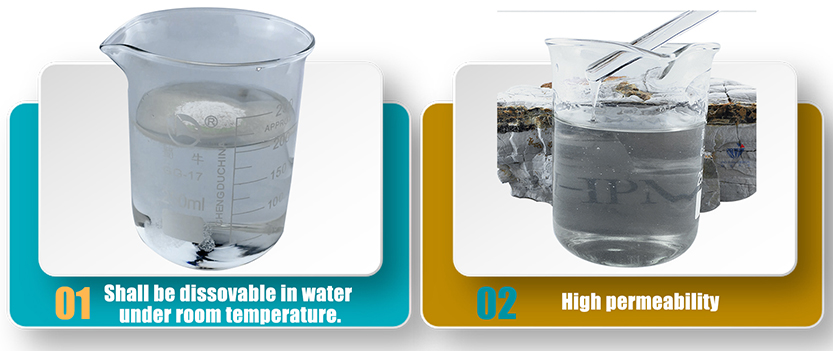
Sep . 05, 2024 05:49 Back to list
hydroxypropyl methyl cellulose cas no
Understanding Hydroxypropyl Methylcellulose (HPMC) A Versatile Compound
Hydroxypropyl Methylcellulose (HPMC), with its CAS number 9004-65-3, is a cellulose derivative widely used in various industries, ranging from food and pharmaceuticals to construction and cosmetics. Known for its excellent film-forming, thickening, and stabilizing properties, HPMC is a synthetic polymer that plays a crucial role in numerous applications.
HPMC is produced by modifying cellulose, which is derived from natural sources such as wood and cotton. The process involves treating cellulose with propylene oxide and methyl chloride, resulting in a compound that possesses unique properties not found in its natural counterpart. One of the most notable characteristics of HPMC is its solubility in water, which can be tailored based on the degree of substitution of the hydroxypropyl and methyl groups. This adaptability makes HPMC an ideal ingredient for formulating various products.
Understanding Hydroxypropyl Methylcellulose (HPMC) A Versatile Compound
In pharmaceuticals, HPMC serves multiple purposes, including as a binder in tablet formulations and as a gel-forming agent in controlled-release drug delivery systems. Its biocompatibility and non-toxic nature make it an attractive choice for enhancing the efficacy and stability of pharmaceutical products. Furthermore, HPMC is commonly used in eye drops and other topical applications, where it functions as a lubricant and protective agent.
hydroxypropyl methyl cellulose cas no

The construction industry also benefits from the properties of HPMC. It is often added to cementitious materials to improve workability, water retention, and adhesion. In tiling, HPMC enhances the performance of adhesive mortars, ensuring better bonding and flexibility—essential qualities for durable installations.
Beyond these industries, HPMC finds applications in cosmetics and personal care products, where it acts as a stabilizer, emulsifier, and thickening agent. It is commonly found in creams, lotions, and shampoos, helping to improve product consistency and performance.
Despite its extensive use, HPMC is generally regarded as safe (GRAS) by various regulatory bodies, including the FDA. Its low toxicity and non-allergenic nature contribute to its popularity across many applications.
In conclusion, Hydroxypropyl Methylcellulose (HPMC) is a highly versatile compound that plays an integral role in numerous industries. From enhancing food quality to improving pharmaceutical formulations and construction materials, HPMC demonstrates its importance as a functional ingredient. As research continues to explore its potential applications, HPMC will undoubtedly remain a key player in the development of innovative products.
-
Versatile Hpmc Uses in Different Industries
NewsJun.19,2025
-
Redispersible Powder's Role in Enhancing Durability of Construction Products
NewsJun.19,2025
-
Hydroxyethyl Cellulose Applications Driving Green Industrial Processes
NewsJun.19,2025
-
Exploring Different Redispersible Polymer Powder
NewsJun.19,2025
-
Choosing the Right Mortar Bonding Agent
NewsJun.19,2025
-
Applications and Significance of China Hpmc in Modern Industries
NewsJun.19,2025







